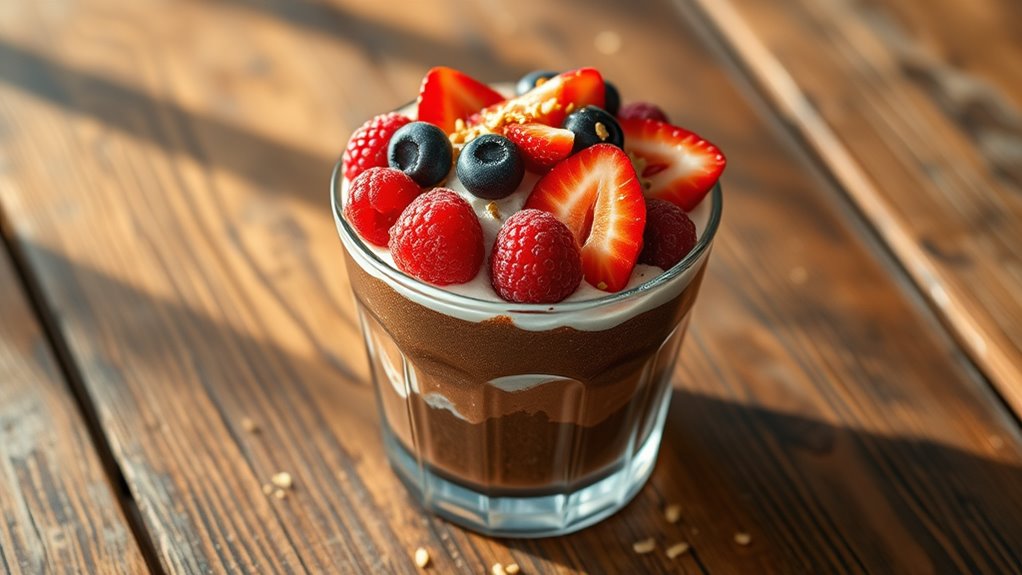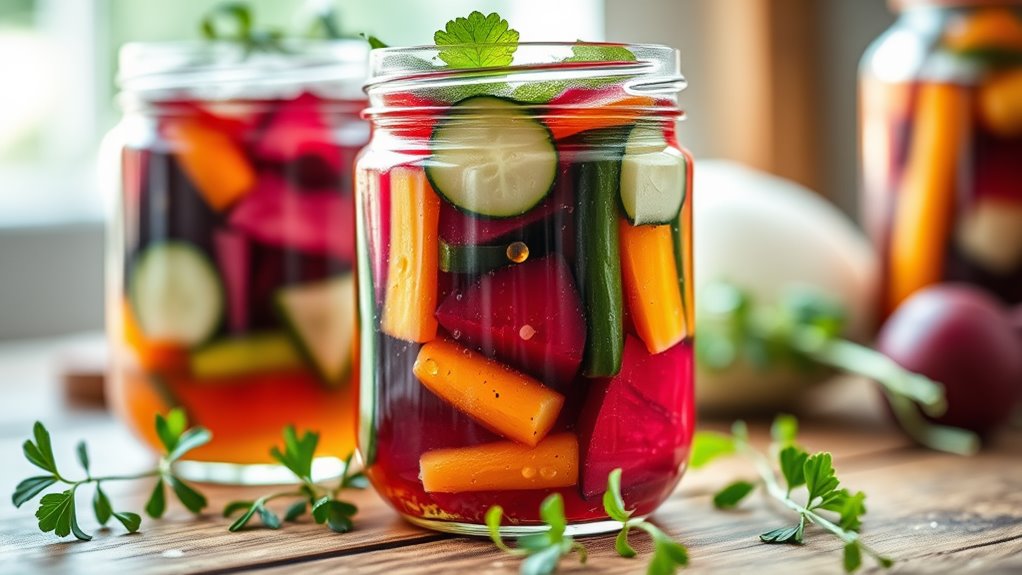Sourdough Starter Guide – Ancient Bread Making Simplified
A sourdough starter is a living culture made from equal parts flour and water, leveraging wild yeast and beneficial bacteria. You’ll create one by mixing whole wheat or all-purpose flour with filtered water, allowing it to rest in a warm spot. Regular feedings maintain its health; look for active bubbles as signs. The fermentation process not only enhances flavor but also improves digestibility. If you want to master your sourdough journey, there’s so much more to explore!
What Is a Sourdough Starter?
A sourdough starter is a living culture of flour and water that harnesses wild yeast and beneficial bacteria to ferment dough.
To create a gluten free sourdough starter, you need to use gluten-free flours, which will still capture those wild microbes.
This unique blend fosters a vibrant ecosystem, resulting in flavorful, tangy bread while maintaining the integrity of gluten-free diets.
Ingredients Needed for Your Starter
To cultivate your sourdough starter, you’ll need a few key ingredients that play a pivotal role in fermentation. Gather these essentials:
-
Flour – Whole wheat or all-purpose will work, providing necessary nutrients.
-
Water – Use filtered or bottled to avoid chlorine, which can inhibit yeast.
-
Time – Patience is crucial for developing the robust flavors in your starter.
With these, you’re ready to begin!
Step-by-Step Instructions for Creating Your Starter
Creating your sourdough starter involves a series of precise steps that harness the power of wild yeast and bacteria.
Begin by mixing equal parts flour and water in a container. Stir thoroughly to incorporate air. Cover loosely, allowing airflow.
Let it rest in a warm spot, and watch for bubbles over several days. This magical process will give life to your starter!
Maintaining and Feeding Your Sourdough Starter
After cultivating your sourdough starter, the next important stage is maintaining and feeding it to ensure its health and vigor.
Follow these steps:
-
Feed Regularly: Use equal parts flour and water, about 1:1:1 ratio, by weight.
-
Temperature Matters: Keep your starter in a warm, consistent environment (ideally around 75°F).
-
Monitor Bubbles: Look for active bubbles as a sign of health and fermentation.
Troubleshooting Common Starter Problems
Even the most experienced bakers encounter issues with their sourdough starter from time to time. Here’s a quick troubleshooting guide for common problems:
| Issue | Possible Cause | Solution |
|---|---|---|
| No bubbles or rise | Insufficient feeding | Increase feeding frequency |
| Strong odor | Over-fermentation | Reduce ambient temperature |
| Dark liquid on top | Hooche | Stir, then feed |
| Starter is too thick | Not enough water | Add water gradually |
Tips for Using Your Sourdough Starter in Recipes
While it might seem daunting at first, incorporating your sourdough starter into various recipes can elevate your baking to new heights.
Here are some tips to get you started:
- Use it in pancakes for a tangy twist.
- Substitute it for yeast in pizza dough for enhanced flavor.
- Blend into quick breads to achieve a moist texture.
Get creative, and enjoy your baking journey!
The Benefits of Baking With Sourdough
Baking with sourdough offers a range of impressive benefits that elevate your culinary creations.
You’ll not only enjoy enhanced flavor profiles that develop through fermentation, but also reap the nutritional advantages and improved digestibility that sourdough brings.
This ancient method of leavening not only tantalizes your taste buds but also supports your gut health, making it a rewarding choice for both you and your family.
Nutritional Advantages of Sourdough
When you choose to bake with sourdough, you’re not just creating delicious bread; you’re also reaping a plethora of nutritional benefits.
These include:
-
Improved Digestibility: The fermentation process breaks down gluten, making it easier on your stomach.
-
Lower Glycemic Index: Sourdough bread promotes stable blood sugar levels.
-
Enhanced Nutrient Availability: Phytic acid is reduced, allowing better absorption of minerals like magnesium and zinc.
Enhanced Flavor Profiles
Though many might focus solely on the nutritional advantages of sourdough, the profound impact it has on flavor should not be overlooked. The complexity of the fermentation process enhances taste profiles, bringing depth with every bite. Below is a comparison of flavor characteristics across different flours:
| Flour Type | Flavor Notes | Ideal Bread Types |
|---|---|---|
| Whole Wheat | Nutty, earthy | Rustic loaves |
| Rye | Tangy, complex | Pumpernickel |
| All-Purpose | Mild, versatile | Sandwich bread |
Digestibility and Gut Health
The fermentation process in sourdough not only transforms flavor but also enhances digestibility, offering significant benefits for gut health.
By choosing sourdough, you’ll gain:
-
Lower gluten content – The long fermentation breaks down gluten, making it easier on your system.
-
Increased mineral absorption – Yeasts and bacteria help unlock nutrients.
-
Probiotics – Beneficial bacteria support a balanced gut microbiome.
Enjoy baking and feeling good!





